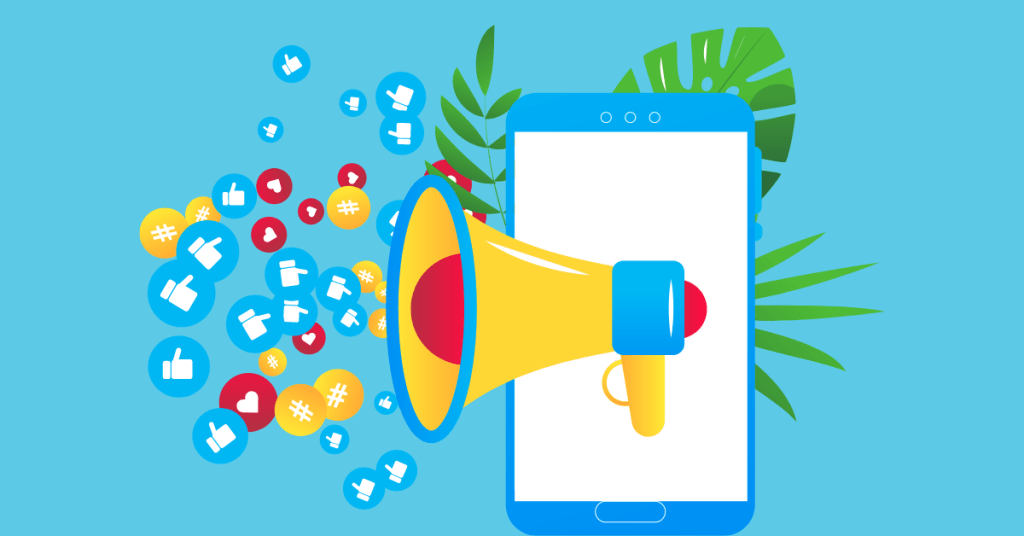Paid social media advertising is the planning, placement and optimization of paid advertising on social media platforms. Worldwide ad spend on these platforms is estimated to be over $200bn annually and still growing double digit. While it is an enormous advertising category it is still not quite as big as paid search.
Paid social advertising has grown in line with social media usage and 60% of the world’s population (4.7bn people) now use social media an average of 2.5 hours per day. All of this increased usage globally has created this huge advertising market as the platforms have placed ads inside the social media feeds to monetise the 4.7bn users. The key paid social advertising platforms for B2C are Meta (Facebook plus Instagram marketing) as well as Tik Tok, Youtube (owned by Google) Twitter and Snap. The key paid social platform for business is Linkedin.

Why paid social
The success of paid social really boils down to its ability to laser target users based on the data signals that platform has. Each social media platform harvests a vast amount of data on its users which they then aggregate and turn into targeting options for advertisers. Each platform has different targeting capabilities depending on how users consume content on the platform. But generally they know what content you like (and don’t like), who you are connected to, your age, marital status, location etc. All of this data they collect provides advertisers with immensely powerful targeting options. If you are a brand selling nappies you can target expectant mothers. If you are a brand selling festival tickets you can target ticket ads to people within a certain radius of the event, who like the artists playing at the festival. If you are a running shoe manufacturer you can target ads to people that watch a lot of running training videos.
Once you place your ad in front of the user you are then able to track the user response all the way through to sale which in turn enables you to calculate the return on your advertising investment (ROAS). Early adopter brands saw incredible ROAS with paid social advertising – an average ROAS of 4X in the first few years for eCommerce brands was the norm – meaning that for every dollar spent, 4 dollars of revenue was generated. This kind of revenue return has become more challenging recently due to external factors e.g more difficult tracking due to privacy changes and an increased cost of goods, but paid social is still an incredible platform for advertisers to generate awareness, drive consideration and convert to sale and revenue.
Which platform should I advertise on?
There are lots of paid social platforms to choose from. So you need to think carefully about which one/s you advertise on. To figure out which platforms are right for you you should first consider your target market. Consider which platform attracts the highest proportion of your target market because each platform has a different audience base. Snap skews very young GenZ, Facebook is older, Tik Tok was younger skew but moving broader very fast.
Then think about the platform ad formats and how it suits your brand: Tik Tok and Youtube are all video – so if you can’t create good video for these platforms don’t use them. Once you have identified the key platforms in terms of target audience and relevant formats create a shortlist. If you are new to paid social and have the luxury of time don’t do every platform at once. Test one platform, find out what works and then scale that up before testing a new platform.
How does paid social advertising work? TOF MOF BOF
Paid social is an auction-based / biddable advertising model. You set up your ad, objective, price, creative, targeting and budget in the social media ad platform. The platform will then take all of that info and deliver the ad in the most efficient way possible, while also managing/ maximizing their own revenue yield. It is a fine balancing act. And because it is an auction, the more advertisers there are, the higher the overall price you pay to reach each person. This means historically that in periods of increased seasonal demand like Christmas the price will go up.
When you are getting started the first thing you will usually need to do is set up tracking so that the platform itself can optimize the performance of your budget and also you can see the return that your advertising is delivering, by audience, by format, by channel. Tracking usually involves installing a pixel on your site at the relevant end point of the journey, usually a dedicated landing page on your website. This fires each time someone arrives who saw/interacted with an ad. This end to end view of the user journey enables the platform to tell you who saw what ad, how much it cost, what they did after seeing the ad, whether it generated a sale (or other action) and what the return on your investment was.
Once you have tracking set up you are ready to build your campaign on the platform. Most platforms have similar ad interfaces that guide you through the process of setting up a campaign. The first area will ask about budget, objective, timeline. The next area will be around targeting: where you can define your audiences, either using the platform’s audience data or even combining that with your own (by uploading an email list and matching it with the platform’s own data to create custom segments). After the targeting / audience selection you will then have to select the creative format and load up the creative and copy (if appropriate). Finally you will usually then have to define what audiences need to see what creative is needed.
TOF MOF BOF
You will hear alot about TOF MOF BOF in paid social advertising. This stands for top of funnel (TOF), middle of funnel (MOF) and bottom of funnel (BOF). The reason people talk a lot about these 3 things is because they often guide how you set up campaigns in paid social platforms.
Top of funnel activity gets your band in front of potential new customers. You will set your top of funnel targeting to identify the people who have never seen or interacted with your brand, but that might be interested in it. If you sell running shoes you may want to target people interested in running – that would be a good segment to go after. A broader segment might be people interested in fitness generally. And another segment may be unhealthy people who lounge around alot in leisurewear but never go out running ! You then place your ad in front of those people and see who shows interest – which leads us to the middle of the funnel.
Middle of funnel refers to audiences that have interacted with your brand in some way but not yet purchased. These people are warm prospects who are interested in your brand product or service. They are considered middle of the funnel when they have clicked, liked, followed or visited your brand destination – any action that signals they are interested. These people are considered middle of the funnel. These middle of funnel people are then primed to target with a harder ‘bottom of funnel’ sales message because you know they are interested.
Bottom of funnel activity is where you hope to close the deal and make the sale to generate revenue. Bottom of funnel targets ads to people who have expressed interest but not converted. The most common and effective bottom of funnel activity is retargeting. This is where someone visited your site, perhaps added a product to their basket, but didn’t convert. Bottom of funnel activity will usually retarget these people with ads until either they purchase.
When you are setting up your paid social activity you will usually combine these different types of segments (TOF,MOF,BOF) to create a funnel that moves people from awareness to consideration and purchase. It is generally an effective way to set up your paid social campaigns.
Creative Consideration
Paid social is effective because you can target with precision but often the mistake advertisers make is with creative. They set up lots of detailed targeting segments across TOF MOF BOF but then show exactly the same creative to each segment. This makes all that hard work less effective. You have to show a relevant creative to each segment at each stage of the funnel. So it is imperative that you consider what message and creative will work best for what segment.
Top of funnel is about generating awareness so the more creative and engaging the ad the better. For paid social, think about this as a thumb stopping exercise: you are trying to stop someone scrolling at a million miles an hour – so it has to grab their attention quickly to get them to stop on your creative. Middle of the funnel you are targeting people already interested but not yet purchased: so your creative should reflect that. Think about what kind of message would encourage them e.g testimonials from other users. Bottom of funnel creative is designed to close the sale on people already interested so think about what might do that: an offer, a discount or a limited time opportunity.
As well as making sure you show the right creative to the right audience, to take advantage of the targeting, you should also consider the volume of creative you produce. The vast amount of data collected with paid social ads means lots of optimisation opportunities not just for targeting but also creative. Many brands will use the advertising performance data to optimize creative as much as audience targeting – looking at what creative (message/image/format) works best and then iterating in creative sprints of 7 days or 14 days depending on spend levels. In general the more creative you are able to produce the better the performance.
70.20.10 Rule
As a rule of thumb you should always be testing new things in paid social. The simple reason for this is that this space is incredibly dynamic. Platforms release new features all the time and audience behavior can change very quickly also. So it is very likely that what works today won’t work tomorrow. This means you have to constantly be testing new things to keep your paid social growth engine working.
A good way of making sure this happens is to divide up your budget according to the 70.20.10 rule, whereby you allocate 70% of your budget broadly to stuff you know works – the audiences, platforms and channels you know deliver the results. Allocate 20% to things you have tested but not sure if they can scale up. And finally allocate 10% of your budget to testing new things: either new features, targeting, formats or platforms. Using the 70.20.10 rule will ensure your paid social advertising budget is always working hard.

What does a paid social expert do?
Paid social experts like Robin Brooks on Traktion are usually specialists in one or two platforms. It’s hard to be a true expert in more than 3 platforms because they release new features almost every day. A paid social expert will set up your campaign structure on these platforms and advise on both the targeting and creative as well as budget. They should be able to set up your analytics and pixels as well as create and customize your audience segments. Once your campaign is set up a paid social expert will review the performance data against your objectives at regular intervals and make optimisation recommendations which will then be implemented on the platform. They should provide a regular report to show how things are going, what’s working and what isn’t as well as the changes they have made to improve performance. You should expect a call at least once a week with a paid social expert to run through the performance and changes.


